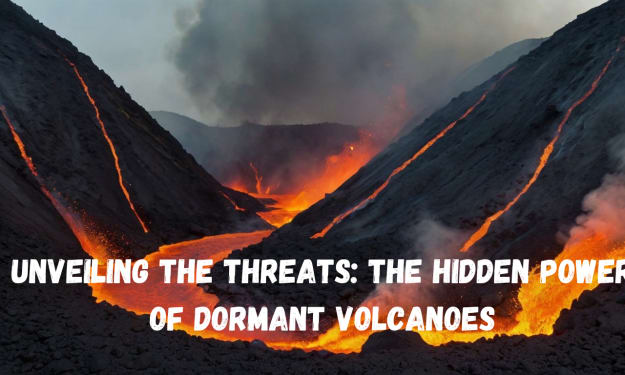How Big Is The Universe?
Is the Universe infinite? Or does it somehow fold in on itself? And if so in what shape? Join us today as explore the size of the Universe.

Earth our home planet a little blue speck drifting in the colossal Astronomical sea here dwells everybody you at any point realized each human who at any point experienced each story that was at any point told it's where our process starts yet as we zoom out past our environment past the moon Past The Natural planet and the sun we set out on a Legendary Journey a mission to get a handle on the valid size of our universe as we leave Earth's hug the principal marker on our Inestimable excursion is the moon around 384,000 km away a distance so immense that if you somehow managed to drive a vehicle at a steady speed of From this lunar Vantage Point on Earth, it would take you more than 160 days to reach it at 100 km per hour. appears to be a delicate sphere of blues and greens cradled in the black space void, a sight that places our reality into a lowering viewpoint this is Earth as seen from the Moon as we proceed our outward Excursion the following Achievement is the sun lying roughly one galactic unit away from Earth this unit identical to around 150 million kilm is the standard gauge for distances in our nearby planet group envision this light going at an astonishing pace of 300,000 km/s requires around 8 minutes and 20 seconds to Travel from the Sun to Earth if you somehow managed to travel this distance in a business stream flying at 900 km hour it would take you around 19 years this enormous Even within our own solar system, the Sun, distance serves as a stark reminder of the vastness of space. searing Behemoth gives life-supporting energy to our planet from this unbelievable distance wandering past our home planet and its sun based friend the sun we set our destinations on Mars our perplexing red neighbor Mars at its nearest way to deal with Earth is around 54.6 million kilm away anyway this distance can extend up to 401 million km when the two planets are on inverse sides of the sun to place that in context making a trip to Mars at the speed of a business fly would take upwards over the past 50 years, the vast distance between Earth and Mars has presented a significant obstacle. for space investigation The Wanderers and tests we've shipped off the red planet leave on an excursion that is not only far away, but also complex due to the orbital and distance changes that occur constantly. Elements as we excursion to the peripheral spans of our nearby planet group we experience Neptune the far off ice monster lying generally 4.5 billion kilm from Earth Neptune denotes the edge of our sun oriented neighborhood daylight dashing across the vacuum of room requires around 4 hours and 15 minutes to arrive at Neptune from the Sun this stunning distance features the tremendousness of our sun oriented framework sent off in 1977 the Explorer One space test addresses Humankind's unquenchable interest furthermore, our craving to investigate Past referred to bound limits at this point Explorer 1 has gone for It has traveled more than 22 billion kilometers from Earth over the course of four decades. the most distant object created by humans, a still Wanderer in the cosmic sea in 1990 at following Carl San, a well-known astronomer, Voyager 1 turned its camera back toward Earth in order to one last photo this brought about the notorious light blue speck picture and a ways off of around 6 billion kilm from Earth our planet showed up as a little weak spot in the limitlessness of room Sean gracefully thought about this picture accentuating our obligation to love and protect our just home a little Spot in the tremendous Universe At the actual edges of our nearby planet group lies the ort Cloud a tremendous hypothetical circle of cold items this far off cloud is remembered to stretch out up to a stunning 100,000 cosmic units from the Sun that is around 1.9 light years a distance so tremendous that it's on the cusp of interstellar space researchers decide the limit of the heliopause, or interstellar space, where the sun's solar wind is stopped by interstellar medium this is where the impact of our sun stops and the immense domain of interstellar space Starts the or Cloud addresses the last boondocks of our nearby planet group a limit Zone where the sun no longer exerts its influence and where the actual cosmic journey into the Galaxy begins, as we venture Alpha centor, the nearest star, is our next point of interest beyond our solar system. system to our sun, which is approximately 41.3 trillion kilometers away. This is more than 276,000 kilometers. astronomical units at such vast distances, the AU is a convenient unit of measurement within the solar system. starts to lose its common sense thus space experts utilize the Lightyear the distance light goes in one year for Interstellar estimations Alpa centu is around 4.4 light years from us taking into account our ongoing space make a trip innovation an excursion to Alpha centor is practically inconceivable For instance, it would take more than 70,000 years for the Voyager spacecraft, which travels at about 17 km/s. to arrive at this adjoining star framework this huge distance highlights the immeasurability of space that isolates the stars and features the difficulties of interstellar travel our excursion now takes us to the massive Milky Way galaxy, which is about 100,000 light years across. This enormous spiral galaxy is home to hundreds of billions of stars, each of which has the potential to facilitating their own planetary frameworks inside this monstrous design there's a minuscule circle known as the human radio air pocket reaching out around a 100 light a long time from Earth this air pocket addresses the farthest degree of human impact in the universe the compass of our radio and transmissions Beyond this bubble, it appears as though human civilizations have never existed. larger part of our system would be unmindful of our presence given that our signs haven't contacted them yet the size of the Smooth Way is tremendous to such an extent that our whole written history is however a murmur in the Vast Breeze imperceptible Past this little air pocket as we leave the Smooth Way we Enter the nearly infinite intergalactic space where galaxies float in the air. grandiose sea isolated by incredible distances our universe is important for a little Infinite area known as the nearby gathering a bunch of in excess of 50 universes spread across roughly 10 million light years the nearby gathering is a different get together including not simply winding cosmic systems like the Smooth The distances here are so great that Way, Andromeda, and a large number of smaller dwarf galaxies can be seen. To traverse this scale, it would take 10 million years for light to travel from one end of the local group to the other. diminutive people anything inside our own World highlighting the hugeness of the universe Intergalactic space in this vast void is a silent wilderness that lies between the islands of galactic light. our system home to our whole history is only a small Bit among numerous a solitary story in the grand Cosmic Library When we look beyond the group we are in, we come across the gigantic Virgo supercluster an enormous assortment of World gatherings and bunches including our own neighborhood bunch enveloping a locale of room around 110 million light a long time in measurement or 33 megap parex the Virgo super bunch is a Titanic construction in the universe containing large number of cosmic systems from at On our way, we'll pass through at least 100 galaxy groups and clusters, each with its own Myriad of stars and planets. An even more stupendous cosmic structure can be seen beyond the Virgo supercluster. the lanaka supercluster this massive Assembly of cosmic systems which incorporates the Vergo supercluster and spans more than 500 million light-years, is our vast galactic home, lakia, which means tremendous Paradise in Hawaiian really satisfies its name containing the mass of 100 million billion Suns lakia is a gravitational Magnum opus with World groups superclusters and endless at the center of Lanaka are celestial bodies bound together in a cosmic web of attraction and motion. Lies the extraordinary attractor a puzzling locale of room that applies a gigantic gravitational pull on the galaxies that are part of this super cluster, which cover the entire Milky Way. neighborhood gathering and, surprisingly, the Virgo supercluster are simply little parts of this massive construction The profound context that lanak Kia provides for our existence in this enormous supercluster is as we get closer to the, we become a part of something much larger and more majestic than we can fully comprehend. limits of our Grandiose investigation we experience the restrictions of the noticeable universe an Aston astronomical Marvel has a diameter of approximately 93 billion light years, which leads to a fascinating question on the off chance that the universe is just 13.8 billion years of age how might it be so immense the response lies in the idea of vast extension the universe has been extending since the Enormous detonation extending space and increasing distances between celestial bodies, but this is what lies beyond the universe that can be observed. remains one of cosmology's greatest mysteries. Some parts of space are expanding away. from us quicker than the speed of light putting them everlastingly out of our view thusly the genuine size of the whole universe stays obscure and possibly endless the discernible universe tremendous as it is may very well be a minuscule section of the whole Infinite field we are left with the lowering acknowledgment that there could constantly be areas of room whole universes and ponders that we won't ever observer as they Retreat unendingly into the profundities of the steadily growing universe Earth our home planet a little blue spot drifting in the enormous Astronomical sea here dwells everybody you at any point realized each human who at any point experienced each story that was ever claimed to be the starting point of our journey, but as we zoom out beyond our atmosphere and past the moon Past The Natural planet and the sun we leave on an Amazing Q
About the Creator
Ibok Gerard
Ibok Gerard is a wordsmith, dreamer, and adventurer. His writing explores the intersection of mystery and reality
Enjoyed the story? Support the Creator.
Subscribe for free to receive all their stories in your feed. You could also pledge your support or give them a one-off tip, letting them know you appreciate their work.






Comments
There are no comments for this story
Be the first to respond and start the conversation.